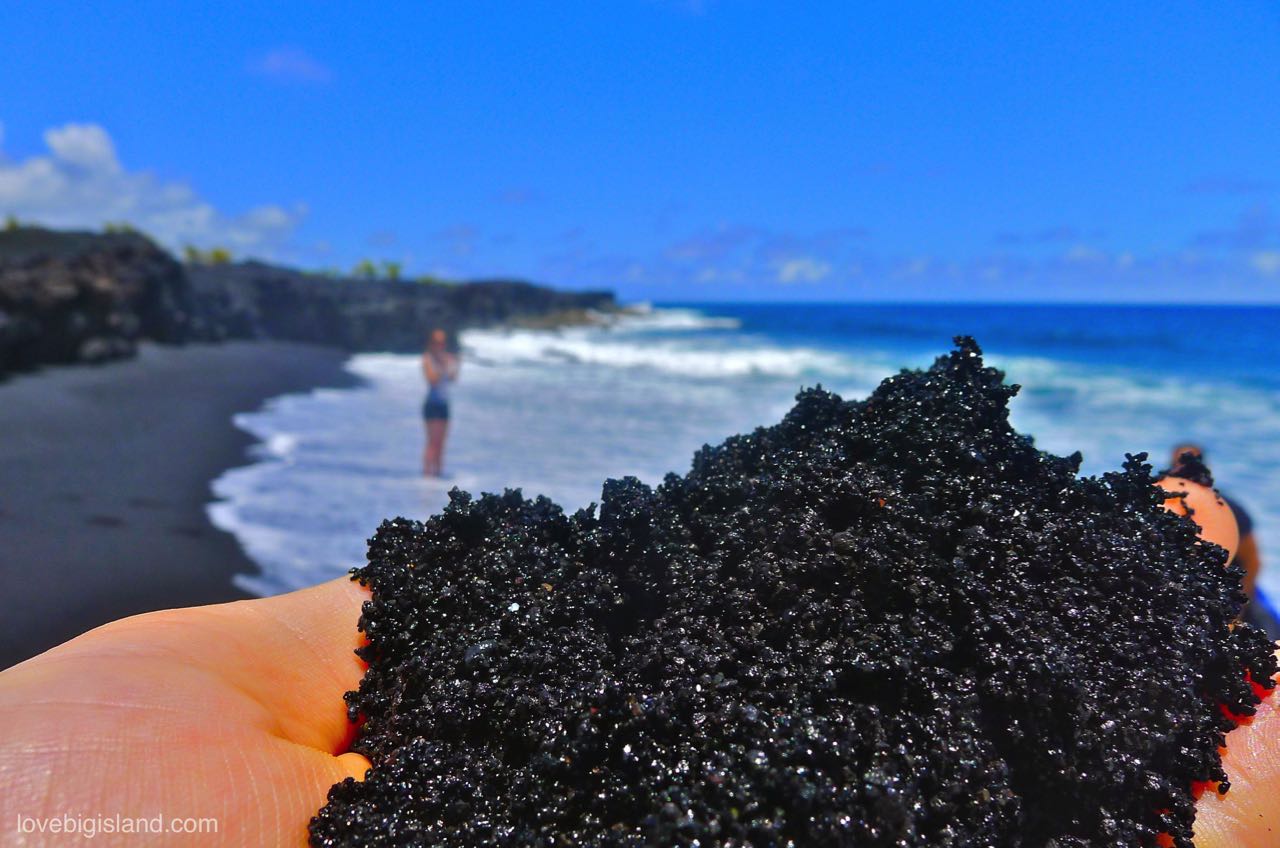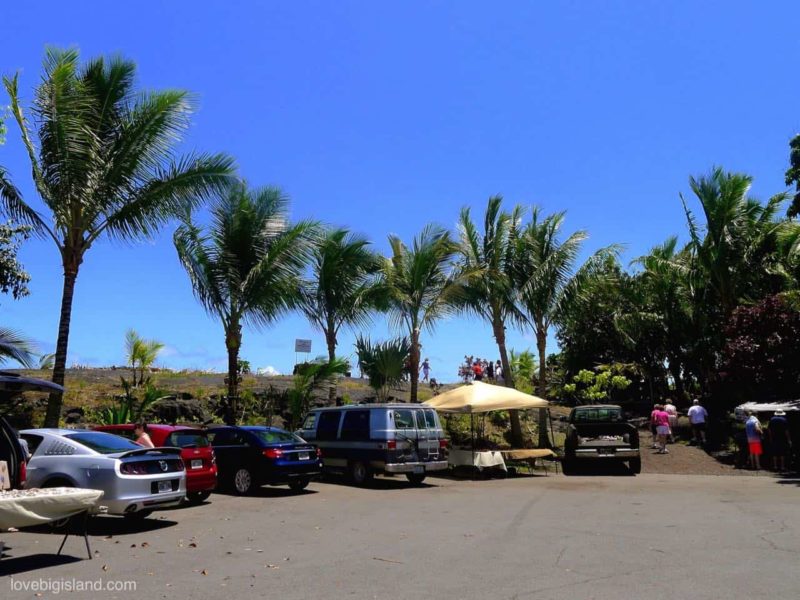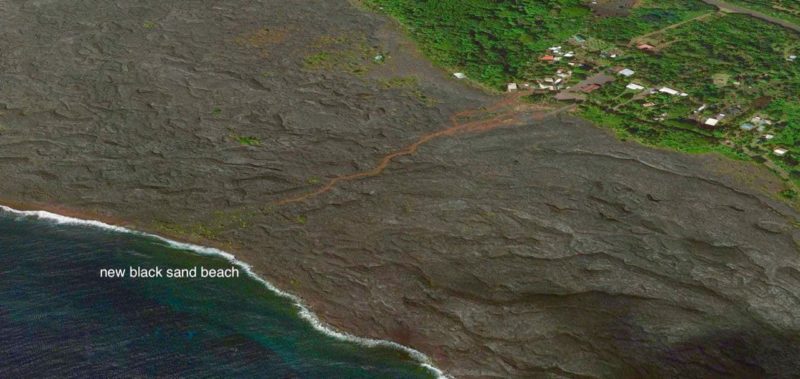Kaimū beach is a very young black sand beach south of Pahoa in the Puna district on the Big Island. Few beaches on the Big Island have such an interesting / sad / HOT / rich history as Kaimu beach. Once one of the most beautiful beaches on the Big Island, it now is a young black sand beach forming 50 ft above the old beach.
This is not a beach for swimming or snorkeling, but we do consider it almost a must-do for any visitor that is interested in volcanoes.
Our guide to visiting the beach at Kaimū bay contains the following information:
Table of contents
- Kaimu Beach
- 5 good reasons to visit Kaimu beach
- Kalapana and Kaimu before the lava
- The lava flow that covered Kaimu beach
- Directions for Kaimu beach
- The short hike to the beach
Table of Contents
- Kaimu Beach
- 5 good reasons to visit Kaimu beach
- Kalapana and Kaimu before the lava
- The lava flow that covered Kaimu beach
- Directions for Kaimu beach
- The short hike to the beach
1: Kaimū (or Kalapana) black sand beach
A new black sand beach is forming now at the same location as where the bay once used to be: (new) Kaimū Beach.
Kaimū beach is not a good place to go to if you are interested in swimming, snorkeling, or tanning. The ocean current and waves are often too strong for safe swimming, and there is no protection from the wind and the sun.
Kaimū beach still is one of the most interesting beaches to visit while on the Big Island. You can read our 5 good reasons for visiting Kaimū beach after the following picture of the new black sand beach.
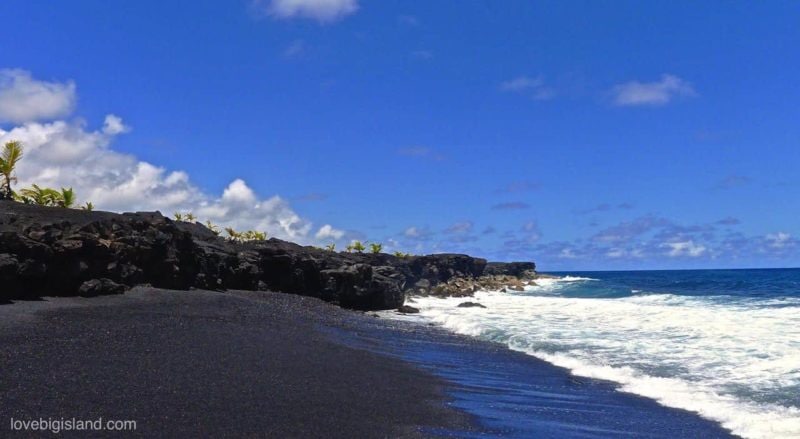
The new black sand beach at Kaimū bay is still very young. The black sand comes from the breaking down of black lava by the ocean
5 good reasons for visiting Kaimū beach:
- Kaimū beach is one of the best places to experience the continuous cycle of destruction and rebirth that gives the Big Island its almost magical atmosphere. You can see the destruction and creation with your own eyes.
- New Kaimū beach is very young! How often do you get the chance to walk on a beach that is younger than yourself? (this point is obviously only valid for people born before 1990)
- A visit to Kaimū beach lets you see the amazing and destructive power of the Kilauea volcano. The original Kaimū beach shoreline used to be very close to the houses where you can now park your car. Now the bay is filled in completely by lava and you need to walk 300 meters over this new land to get to the beach.
- Kaimū beach fits very easily into every itinerary that takes you into Puna. A visit can be combined with e.g. a visit to the lava flow, a visit to the even newer Pohoiki beach, or into a very scenic road trip between Kapoha and Kalapana.
- If you plan to visit the beach on make sure to have a look at the uncle ‘Awa club or kitchen for a snack. Wednesday evening of Saturday morning you can also visit a lively (night) farmers market here!
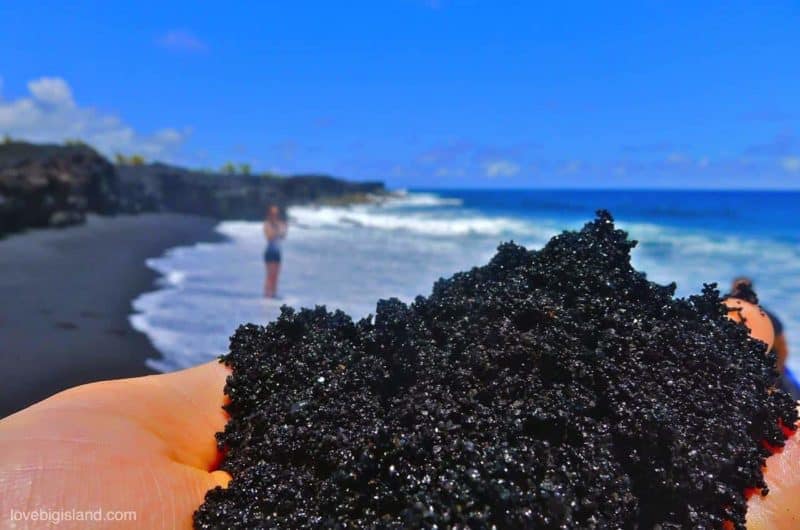
If you look closely you can see that the black sand at the beach consists of many small parts of solidified lava.
Sand or no sand?
The pictures we made when visiting show lots of fine black sand but it is possible that the beach looks different during your visit. Why you ask? Well, the waves here can be strong and move a lot of sand along the coast. Sometimes the beach can disappear for weeks at a time, and then come back overnight. Pretty neat!
Kalapana and Kaimū before the lava
Before the lava covered Kaimū bay, the beach there was a beautiful black sand beach lined with palm trees. Below you can see a photo of Kaimū beach in 1959.
Perhaps with enough time, Kaimū beach will once again return to its former glory.

By Father of JGKlein, used with permission, Public Domain, Link
The lava flow that covered Kaimū Beach
The lava flow that filled Kaimū bay in 1990 also covered almost the complete towns of Kalapana and Kaimū under a thick layer of lava. A few original houses still remain while others have been rebuild on the new lava surface.
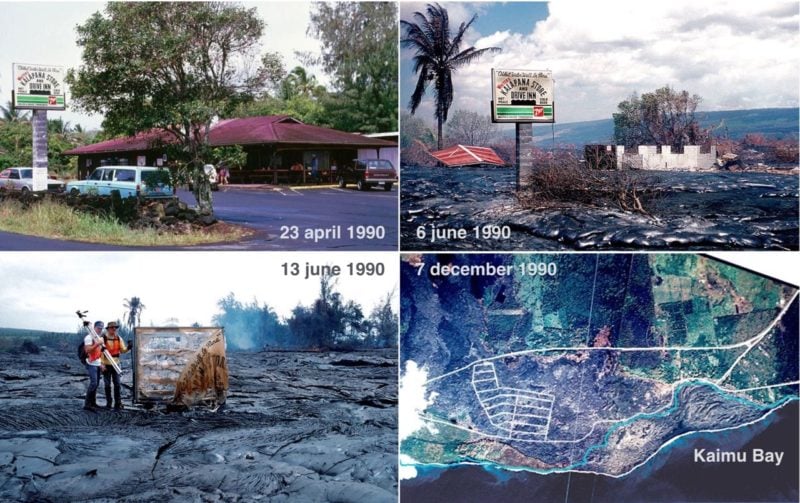
Walter’s Kalapana Store and Drive Inn (see the same sign in the top two and bottom left panels above) was burned and covered by lava in early June 1990 as flows moved relentlessly through the Kalapana area. This same lava flow filled in Kaimū bay completely, as shown in the aerial photograph in the bottom right panel. Here, the former shoreline is shown in blue, and roads in Kalapana Gardens subdivision and Highway 130 are shown in white. Credit for all photos: USGS [source].
If you are interested in reading more about the lava flows that covered Kalapana the best place to start is the historical account on the USGS website.
2: Directions to Kaimū black sand beach
To get to this beach you need to follow the Kapoho-Kalapana Road (Hwy 137, coming from Kapoho) or the Pahoa-Kalapana Road (Hwy 130, coming from Pahoa) all the way to the end. You will reach a cluster of houses and a large parking lot where you can park your car:
The short hike to Kaimū beach
From the parking lot it is a 300 meter, 5 to 10 minute walk to the beach over the so-called “Kaimū Beach Eco-Path”. This trail leads over the barren lava fields, past a few newly planted coconut palms, to the beach:

The road from the Kalapana parking lot to Kaimu black sand beach is ~ 300 meters long and marked with red gravel.
Once you reach the beach take care when climbing down to the water. There are a few spots where you can easily walk to the shoreline, but there are also many parts where you need to climb down 6 to 8 feet of sharp lava rocks. Take your time to look around and to find the best place to walk down to the water.
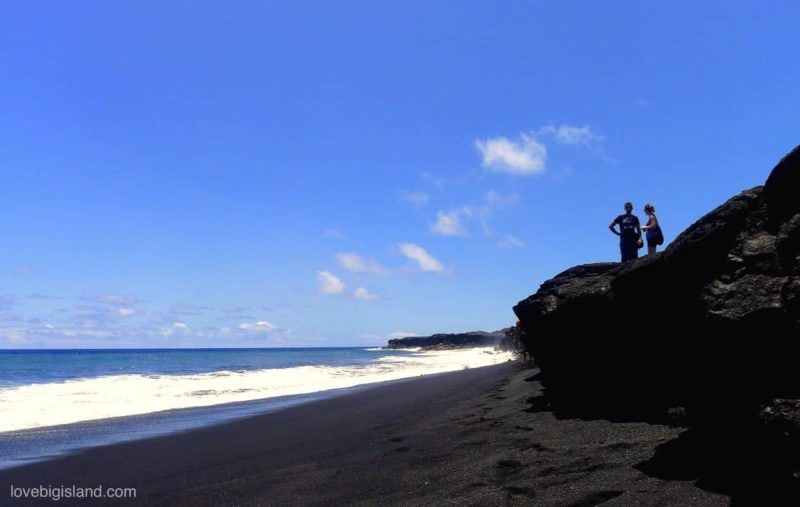
Because the beach is so new access to the black sand can be difficult. Don’t try to climb down cliffs like these, but look around for an easier place to walk down
You can see an overview including the parking lot (top right), the path from the parking lot to Kaimū beach (center), and the beach (bottom left), in the picture below:
